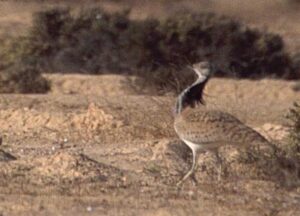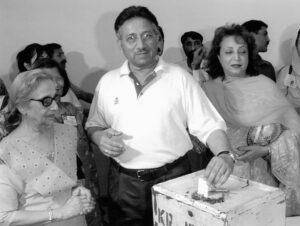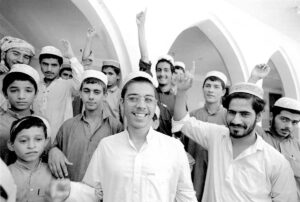Mary Anne Weaver
- 2001

Fellowship Title:
- Pakistan: In the Shadow of Zia Ul-Haq and Afghanistan
Fellowship Year:
- 2001
How Long Will It Last?
The timing hardly seemed fortuitous. On May 1st, only 24 hours after a controversial referendum in Pakistan, which allowed General Pervez Musharraf to extend his Presidency for an additional five years — and, in the process, stripped away the country’s last façade of constitutional rule — Pakistani officials acknowledged that U.S. ground forces would be permitted to operate inside Pakistan. Their objective: to pursue or ferret out members of al-Qaeda — and perhaps even Osama bin Laden himself — who were believed to be regrouping here, in the craggy mountains and rolling hills on both sides of the Pakistan-Afghan frontier. One Pakistani intelligence official told me that some three thousand or more al-Qaeda fighters and members of the Taliban had slipped across the Afghan border into Pakistan — most of them through the tribal areas of the North-West Frontier Province and Balochistan. Even bin Laden himself had been spotted twice in recent weeks, an Afghan intelligence official told the press, just across the border in Pakistan’s tribal area of North Waziristan. But diplomatic and strategic

Of Birds and Bombs
I never thought I would ever want to return to Dalbandin, a little desert town of some five thousand people in the Pakistani province of Balochistan. It is one of the least memorable places I have ever been, situated uncomfortably in the middle of nowhere. It has mud-baked streets and a teeming bazaar, and clusters of tiny mud houses that are dwarfed by the soaring minarets of a white marble mosque, which had been built a number of years ago by the Saudi Arabian Defense Minister, Prince Sultan. The town’s economy is based on grazing and smuggling, and every man seems to be armed. Dalbandinians are outnumbered by Afghan refugees two to one. The Government Guesthouse where I stayed, during a December visit a few years ago, is a low-slung building with peeling green walls and a concrete floor, covered here and there by straw mats. There was no heat, and it was freezing cold. There was no running water, no electricity, no coffee, no butter, no herbal tea. “But if we are fortunate, Madam,

General on a Tightrope
With his country’s domestic and foreign policies largely buried in the wreckage of the World Trade Center and the Pentagon, General Pervez Musharraf, the military ruler of Pakistan, faced a stark choice: to align his country solidly behind the United States’ war against terrorism — the first battleground of which was just across his border in Afghanistan — or to be ostracized as the leader of a pariah state. In 48 hours in October, the 58-year-old general made his choice. He abandoned his country’s sponsorship of the Taliban, Afghanistan’s ruling student militia which Pakistan largely had spawned. He confronted tens of thousands of angry demonstrators on his streets, whose loyalties were not so much with Pakistan, as with the Taliban extremists and Osama bin Laden, Washington’s most wanted man. And then, to the surprise of many and the incredulity of most, he purged his army of the three key generals who had brought him to power less than two years before, as the leader of a cabal of fellow generals. But no sooner had Musharraf

A Land of Madrassahs
The Sept. 11, 2001 terrorist attacks on America has focused world attention on Peshawar, from where U.S. military strikes could still come. Peshawar — only thirteen miles southeast of the Khyber Pass, with Afghanistan beyond — is a rugged, lawless place, riven by religious fervor and violence and rich in political intrigue. The capital of Pakistan’s North-West Frontier province is a sprawling town of pastel colored villas and Afghan refugee camps, militant training centers and madrassahs, the religious schools where jihad, more often than not, is preached. It is a center for arms, drugs and a booming black-market economy. Students at the Markaz-Uloom-e-Islamia religious school in Peshawar, Pakistan raise their hands when asked who is ready to fight a jihad, or holy war, against Israel and its allies, August 27, 1998. About 150 students ranging in age from 10-40, study a core curriculum of Arabic, Islam, and the memorization of the Koran. (AP/Wide World Photos) The key staging area for the jihad in Afghanistan, Peshawar is an example of an economy which is nearly bankrupt
